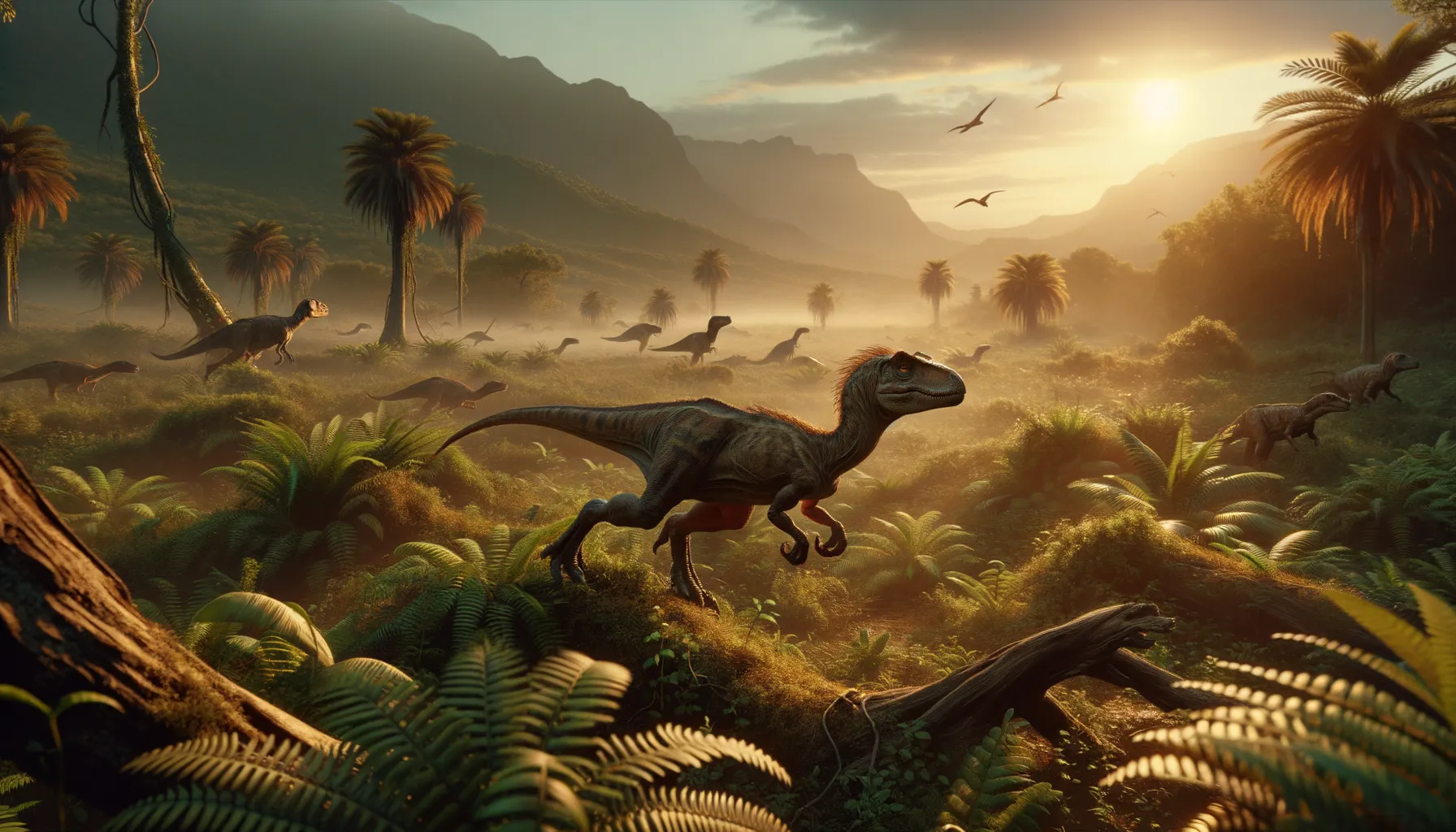
Velocisaurus
Speedy predator of the ancient world.
Period
Cretaceous
Length
Around 1.5 meters long.
Height
Approximately 1 meter tall.
Weight
Estimated around 20 kg.
Velocisaurus was a nimble, small theropod dinosaur known for its swift movements and lightweight structure. Its remains were found in the Neuquén Province of Argentina, indicating it lived during the Late Cretaceous period. With its slender limbs and probable carnivorous diet, it was likely adapted for quick pursuits, snatching small prey from the dense underbrush of its environment. Far from being the largest dinosaur, its speed and agility were its greatest assets.
Diet
Velocisaurus likely fed on small animals and possibly insects. Its lightweight build suggests it was a nimble hunter, possibly even scavenging for carrion.
Hunting
Armed with sharp teeth and quick reflexes, it likely chased down small, fast-moving creatures in its forested habitat. Its agile body allowed it to swiftly navigate through dense vegetation in pursuit of prey.
Environmental challenges
During the Cretaceous period, Velocisaurus faced fluctuating climates that impacted its food supply. As forests evolved, the availability of prey could have been inconsistent, requiring adaptability for survival. Periodic volcanic activity and changes in sea levels were also challenges that added pressure to its ecological niche, impacting its survival and the diversity of its prey.
Speed
About 30 km/h.
Lifespan
Lived to about 30 years.
First discovery
Discovered in Argentina, 1993.
Fun Facts
- Velocisaurus was a small, agile dinosaur that lived around 85 million years ago in what is now Argentina.
- Despite its name, Velocisaurus was not related to the infamous Velociraptors but was closer to another group of theropod dinosaurs.
- It had a unique, elongated foot structure that suggests it was a speedy runner, perfect for escaping predators or chasing after prey.
- Velocisaurus was a carnivore and likely fed on small animals, using its quick movements to catch them.
- This dinosaur was relatively small, measuring just about 1.5 meters long, making it lean and lightweight for rapid movement.
- The discovery of Velocisaurus helps scientists understand the diverse range of theropod dinosaurs that existed in South America during the Late Cretaceous period.
- The name 'Velocisaurus' translates to 'swift lizard', highlighting its fast and nimble nature.
Growth and Development
Young Velocisaurus likely grew rapidly to minimize vulnerability to predators. Parental care is unknown, but like many small theropods, juveniles had to quickly develop independence. Adaptations for speed and agility would have begun to manifest early in their development, providing a competitive edge in survival.
Habitat
Velocisaurus lived in what is now South America, favoring forested environments with rich flora. These dense forests provided ample cover and hunting grounds, crucial for its survival strategy. Streams and rivers in the area may have influenced its territorial range, as water sources were pivotal during dry periods.
Interaction with other species
Velocisaurus shared its habitat with various herbivorous dinosaurs, which could have served as competitors or prey. It may have had limited interaction with larger predators, avoiding direct confrontation due to its smaller size. Symbiotic relationships with scavengers were likely, as they could capitalize on the remains of hunts.
Natural lifespan
With a natural lifespan of about 20-30 years.
Reproduction
Reproduction was likely oviparous, with females laying eggs in nests constructed with vegetation. It’s unclear if parental care was involved, but hatchlings were likely left to fend for themselves soon after birth.
Social behaviour
Velocisaurus might have been a solitary hunter, though small packs are not out of the question. Any social structures would have centered around hunting advantages or shared defense against larger predators.
Fossil locations
Fossil remains of Velocisaurus are exclusively found in parts of Argentina. Specifically, these fossils were unearthed from the Bajo de la Carpa Formation in the Neuquén Province. These findings have contributed significantly to our understanding of small theropod diversity in South America.
